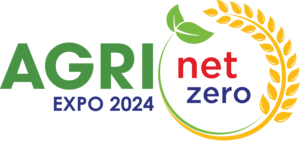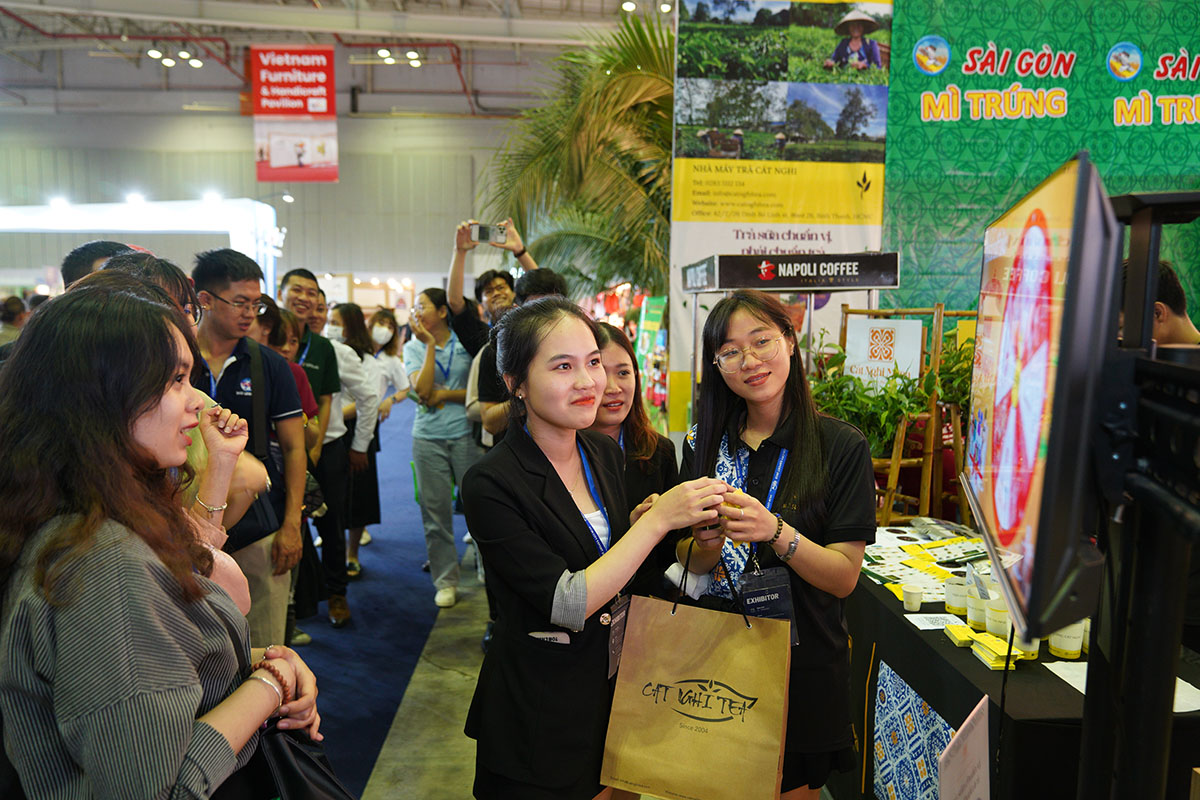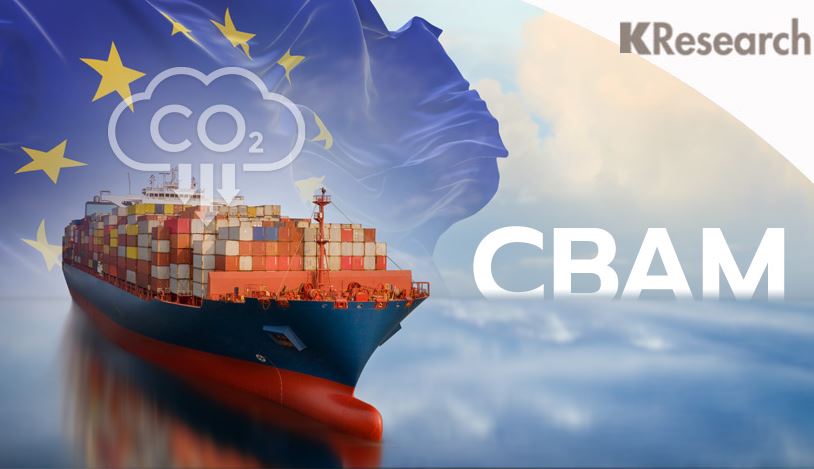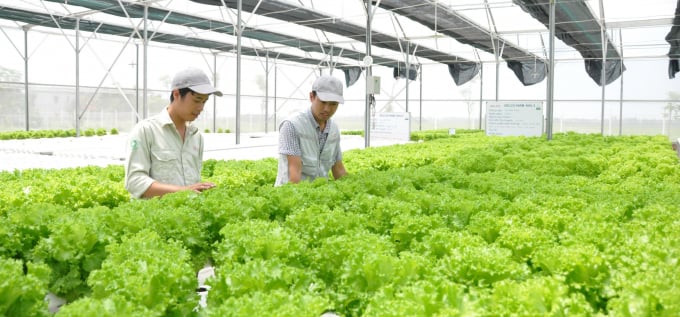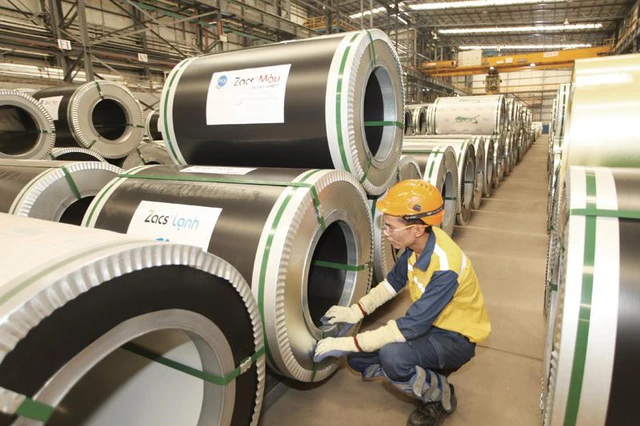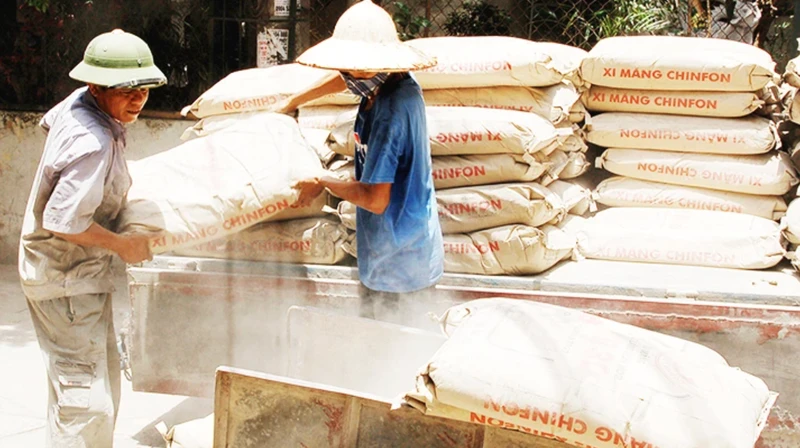Economic development circulation in agricultural next time
- Home
- Agricultural circulation
- Economic development circulation in agricultural next time
Share
RELATED POSTS
TCCS – After nearly 40 years of innovation, agriculture is still an important economic sector contribute to the development socio – economic of the country. Even so, under the powerful impact the industrial revolution the fourth time, agriculture in our country are faced with many challenges for sustainable development. Economic development circulation in agriculture is both requirements, the inevitable trend is a solution development, sustainable agriculture, efficiency.
Potential should be promoted
Before the development trend of economic models-friendly environments in the world in a few decades, The Party and state, we had a route, orientation, economic development, circulation, expressed through the policies enacted in the past several years(1). Specific cultural undertakings, the view of the Party, The state had a number of mechanisms and policy development economic circulation(2). In it, the concept of economic circulation is given in Article 142 of the Law on environmental protection in 2020. Accordingly, the economic circulation is the economic model that the operation, design, production, consumption, and services are all directed to reduce the extraction of raw materials, materials, prolong product life cycle, limiting the waste incurred and minimize the adverse impact on the environment.
However, to date, still has not defined specific economic circulation in the agricultural sector. Can understand the economic circulation in agriculture is the application of scientific advances – technology and waste recycling, by-product in the manufacturing process to create products that are safe, high quality, reduced waste and environmental pollution. This also helps raise awareness of people about the re-use of by-products and environmental protection, thereby creating the products of high quality, safe, environmentally friendly, towards agriculture green. Economic circulation in agriculture is a form of ecological agriculture.
According to data of the General directorate of statistics, the total volume of products 2020 of the country about 156,8 million tons, including: 88,9 million tons of by-products from crop production (accounting 56,7%); 61,4 million tons of livestock and poultry from the livestock sector (accounting 39,1%); 5.5 million tons from the forestry sector (accounting for 3.5%) and approximately 1 million tons from aquaculture (0,64%). The rate of collection-products crop reaches approximately 52% in livestock is 75%, in forestry is 50,2% and seafood is 90%. This is considered to be great resources to economic development circulation in agriculture.
Today in our country, many types of models in economic circulation in agriculture(3) has been applied on many scales and different areas:
Firstlymodel rice using rice husk as fuel – firewood in Vinh Binh Chau Thanh district (An Giang province) with a capacity of 80,000 tons/year using 16.000 tons husk (the husk used in the drying of rice for factory occupies about 50% (8,000 tons rice husk) and the rest will be processed into bars, rice husk firewood sold in the market). Models help cut greenhouse gas (CO2), reduce energy costs by 30%, increase profits 400,000 vnd/ton from the sale of firewood equivalent to 3.2 billion/year.
Mondaymodel circulatory take the product cultivation as stubble to grow mushrooms, bring significant source of income for people. Many households have inclusions straw into the soil to keep a fertilizer source for service, or take probiotics handle straw into organic fertilizer to increase microbial organic help land reclamation; straw as feed for cattle. As practice shows, the amount of straw from a hectares of rice cultivation can create planting is 250 – 300kg fresh mushrooms. With the sale price from 25.000 – 27.000/kg of fresh mushrooms, a hectares in this model, apart from the money, rice farmers can be obtained from 6 – 8 million.
Tuesdaypattern details the culture, associated with the limited use of chemical fertilizers, pesticides, veterinary drugs, growth in crop and livestock in order to not impact the environment and affect human health. Alternative remedies, like many left in the fruit; find resistant varieties hoppers, resistance to pests in wheat and flower color; use the type of fertilizer, fertilizer for plants, vegetable tubers instead of chemical fertilizers...
Wednesdaymodels incorporate cropping, livestock and fisheries (pattern garden – ao – chuồng (VAC); model rice – shrimp, rice – fish...); model of agriculture, forestry and combinations, patterns garden – forest. Pattern garden – pond – barn – bioga (VACB); garden – pond – barn – wood (VACR) in the mountainous province; garden – pond – lake (VAH) in the Central provinces. The current agricultural model this medium to bring high economic efficiency has helped to reduce greenhouse gas emissions. In this model, when shrimp or fish in rice fields, distribution of shrimp, fish, and food leftovers (shrimp, fish) will make additional fertilizer nutrient for rice; conversely, when the harvest is finished, drop the shrimp (and fish) into the field, stubble, grain spillage become a food source for shrimp and fish. Pattern “rice, shrimp”, “rice and fish” to be deployed in practice has helped reduce disease, reduce environmental pollution, product safety, the best is to help farmers increase income fold from 5 – 10 times on the same unit area than just planting rice.
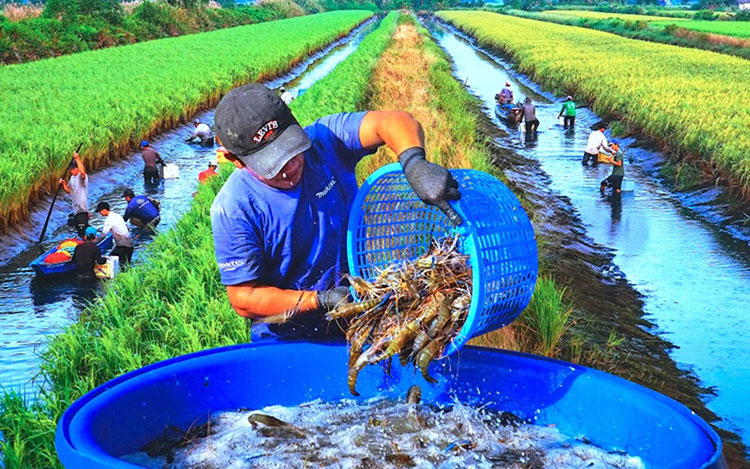
A number of difficulties and limitations
The total volume of products according to the theory in our country in 2020 is about 156,8 million tons, this is a great resource for agricultural development circulation. However, the use of non-rational source products, this is wasteful and is one of the important causes increase greenhouse gas emissions, environmental pollution (land, air, and water). Own products cultivation, according to the calculations of experts of agriculture and environment, can waste up to a few hundred thousand billion/year. Therefore, in the corner of the agricultural economy circulatory associated with green growth-products in agriculture, forestry and fisheries should be considered a renewable resource rather than waste. This is important input, lasting value-added chain in agriculture.
Year 2022, GDP, agriculture, forestry and fisheries highest increase in the past year, reaching 3,36%. Noteworthy, science – technology and innovation contribute more than 30% in value added in agricultural production(4). However, the impressive growth of the agricultural sector and the competitiveness of many agricultural products exports are threatened by the state of environmental degradation and climate change, require early paradigm shift from economy linear to economic circulation to sustainable development.
Currently, the industry of seafood in our country reached about 275 million USD in 2020, in the meantime, if extraction of by-products by high technology, it can fall about 4 billion to 5 billion USD(5). High-tech investment in the fishery products as raw materials for the cosmetics, pharmaceutical, medical, agriculture, especially production of feed ingredients for livestock has great potential, laying the foundation for economic circulation in fishery.
According to the general case of the agricultural sector, by 2020, the total products in the field of forestry is 5.5 million tons. By-products from forestry is also a great resource to make economic circulation, for example, through tablets bio for heating and biomass power. Market tablets biology global reach values 10,49 billion USD (2019), forecast to reach 23.6 billion USD by 2025, private area European union (EU) consumed 50% of the demand for tablets biology global, respectively, 30 million tons (2019), the majority demand for heating and power generation. The amount of by-products, agricultural waste every year is very large, meanwhile, is the number of by-products, waste is processed is still low in comparison with the request. Therefore, the requirements set forth in the time to come is in need of building a circular economy in agriculture aims to contribute to environmental protection, at the same time help increase the value of agricultural products, promote the construction of agriculture in our country in the direction of green, modern, sustainable.
Also according to the statistics of the agricultural sector, on average, each year, Vietnam has about 40 million tons of straw, there are about 20 million tons are burned on the field, causing emissions and environmental pollution; biodiversity loss (the living organisms in the soil, such as fungi, bacteria and animals beneficial). The main cause is the lack of technology solutions and marketplace to buy and sell straw has not been formed, the price of straw is at a very low level. Deeper is due to business, farmers unsold stock only the carbon and the still limited knowledge about the economics of carbon, especially from rice production.
Thus, in the context of natural resources depleted and environmental pollution is increasingly serious, promoting economic model circulation in agriculture is an inevitable trend. However, the development of economic circulation in agriculture are still many difficulties:
A isawareness of the organs of state administration, business and most of the population on economic circulation in general, the economic circulation in agriculture in particular, is incomplete. Although recently, the agricultural production in our country has been gradually interested in the production, sustainable agriculture, organic agriculture, but basically, the production and business in the agricultural sector is still mainly focused to increase yields through increased input. Agricultural production is still primarily based on mining resources, using growth stimulants, pesticides, inorganic fertilizers. Besides, the problem of disposal of waste in agriculture is considered mild, not concerned. This is one of the barriers for agricultural development circulation over time.
Two isframe policy on economic development, circulation has not been completed. In our country, model stubs of economic circulation in agriculture has been there since the beginning of the 80s of the TWENTIETH century, but the term “agricultural circulation” recently mentioned. Economic circulation has formed a “term” associated with the policy, especially in agriculture, is new only as the policy support, recommended to apply the pattern of agriculture in the direction of economic circulation, and thus did not promote economic circulatory become an inevitable trend of agricultural production. Besides, the economic circulation in agriculture related to many areas, but provisions relating to the economic circulation in general, agriculture, periodic in particular, scattered in the laws, decrees different, cute guide and no standardization of economic circulation, has not given full regulations, criteria and standards for the identification, assessment, standards and technology (biology, engineering, feed, processing) for the economic model circulation in the areas of agricultural production, as well as no agency clue about this problem so difficult to implement in practice. Besides, missing the liability rules of business of recovery, resource recovery from the products used; the tools, economic policies such as tax resources, free to protect the environment. in Addition, the use of the experience of countries in a flexible way, get creative to set economic model circulation on specific conditions and institutional peculiarities of Vietnam is still limited. Therefore, the economic model circulatory be applied in agriculture has full right, almost just as spontaneous.
Three isorganizations produce weak, particularly associated production value chain is still limited, many cooperative activities not effective, leading to difficulties in investing, applied technology, advanced process into production and processing of agricultural products. Added to that, still condition the use of fertilizers, pesticides, antibiotics, growth has not yet been effectively manage, lead to excess and formed the risks for the environment,...
Four iswhile economic development circulatory must be associated with innovation, scientific approach to advanced technologies, the investment in research and technology for economic circulation in accordance with the conditions of people and popular technology for economic circulation is still limited, there are no solutions to suit each region, each group of products, the scale farms and businesses. In the context of the industrial revolution the fourth time, capacity, application of science and technology in the economic model circulation in our country is weak. Vietnamese enterprises are mainly small and medium scale, difficulties in investing in technology innovation. The agricultural enterprises of Vietnam, the majority restrictions on recycling, re-use, as well as capital and human resources should be primarily new interest to the collecting, reuse, mature, main product in the production process. The application of digital technology, just stop at some typical patterns and the business has the financial resources... besides that, the lack of a team of qualified experts to develop economic circulation, help to solve the problem, from the first stitch to the last stitch of the whole process. Staff research, applications, technology transfer, waste, scrap, by-products in agriculture is also very limited...
The solutions focus next time
Development, green economy, economic circulatory environment-friendly is a big advocate of the Party and The state in the period of industrialization and modernization of the country. View of promoting economic development, circulation is emphasized in the document XIII of the Party, most were about the vision and development orientation period 2021 – 2030: “the initiative to adapt effectively to climate change, prevention and mitigation of natural disasters, disease; the management, exploitation and use of logical, economical, efficient and sustainable resource; get protected living environment and people's health goals top; kiên quyết loại bỏ những dự án gây ô nhiễm môi trường, bảo đảm chất lượng môi trường sống, bảo vệ đa dạng sinh học và hệ sinh thái; xây dựng nền kinh tế xanh, kinh tế tuần hoàn, thân thiện với môi trường”(6). Kế hoạch phát triển kinh tế – xã hội 5 năm 2021 – 2025 đã chỉ rõ nhiệm vụ đến năm 2025: Xây dựng lộ trình, cơ chế, chính sách, pháp luật để hình thành, vận hành mô hình kinh tế tuần hoàn”(7).
Cụ thể hóa quan điểm của Đảng, Quyết định số 150/QĐ-TTg, ngày 28-1-2022, của Thủ tướng Chính phủ, về “Phê duyệt Chiến lược phát triển nông nghiệp và nông thôn bền vững giai đoạn 2021 – 2030, tầm nhìn đến năm 2050” xác định: Việt Nam hướng tới nền sản xuất nông nghiệp có trách nhiệm, hiện đại, hiệu quả và bền vững; phát triển nông nghiệp sinh thái, hữu cơ, tuần hoàn, phát thải các-bon thấp, thân thiện với môi trường và thích ứng với biến đổi khí hậu. Mục tiêu đến năm 2030, giảm phát thải khí nhà kính 10% so với năm 2020. Theo đó, từng bước giảm dần sức ép của phát triển kinh tế – xã hội với môi trường bằng các giải pháp, như chấm dứt lạm dụng hóa chất, nguyên vật liệu tổng hợp, khó phân hủy; tạo điều kiện tái tạo các nguồn tài nguyên cơ bản như đất, nước, năng lượng; đẩy mạnh chế biến sâu, tận dụng phụ phẩm nông sản để chủ động xử lý ô nhiễm ngay tại nguồn… Thêm vào đó, Quyết định số 687/QĐ-TTg, ngày 7-6-2022, của Thủ tướng Chính phủ phê duyệt Đề án “Phát triển kinh tế tuần hoàn ở Việt Nam” xác định, cần “tập trung ban hành các chính sách dài hạn nhằm khuyến khích, ưu đãi, tạo thuận lợi cho phát triển kinh tế tuần hoàn trên cơ sở nâng cao nhận thức, sự chủ động, phát huy đổi mới sáng tạo và trách nhiệm xã hội của doanh nghiệp, khuyến khích lối sống có trách nhiệm của từng cá nhân đối với cộng đồng và xã hội”; mục tiêu cụ thể là: “Góp phần cụ thể hóa mục tiêu giảm cường độ phát thải khí nhà kính trên GDP ít nhất 15% vào năm 2030 so với năm 2014, hướng tới mục tiêu phát thải ròng về “0” vào năm 2050…”.
Bộ Nông nghiệp và Phát triển nông thôn cũng đề ra mục tiêu phấn đấu đến năm 2030 trong lĩnh vực trồng trọt sẽ có 60% phụ phẩm được xử lý, 80% phụ phẩm lúa gạo được thu gom và tái sử dụng. Trong chăn nuôi có 60% nông hộ và các trang trại xử lý chất thải; hoàn thiện và áp dụng các quy trình quản lý, sử dụng chất thải và tái sử dụng các phụ phẩm của các mặt hàng nông sản chủ lực…
Vì vậy, trong thời gian tới, để tiếp tục đẩy mạnh phát triển kinh tế tuần hoàn trong nông nghiệp, góp phần đạt được các mục tiêu nêu trên, cần tập trung thực hiện một số giải pháp trọng tâm sau:
Firstly, tăng cường truyền thông nâng cao nhận thức và năng lực thực hiện kinh tế tuần hoàn trong sản xuất nông nghiệp. Trong đó: 1- Xây dựng chương trình, kế hoạch truyền thông, nâng cao nhận thức, trách nhiệm của người dân, doanh nghiệp về phát triển kinh tế tuần hoàn trong nông nghiệp; phổ biến yêu cầu, chủ trương, quy định của pháp luật, chính sách khuyến khích mô hình nông nghiệp tuần hoàn và định hướng phát triển nông nghiệp tuần hoàn cho đội ngũ cán bộ, công chức, viên chức ở các cấp, cộng đồng doanh nghiệp và người dân; 2- Xây dựng chương trình, kế hoạch đào tạo nâng cao năng lực thực hiện kinh tế tuần hoàn trong sản xuất nông nghiệp; đào tạo nâng cao nhận thức, chuyên môn nghiệp vụ về kinh tế tuần hoàn trong sản xuất nông nghiệp, chuyển đổi từ mô hình kinh tế tuyến tính sang kinh tế tuần hoàn cho người dân, doanh nghiệp, nhà quản lý, tổ chức sản xuất trong ngành nông nghiệp; 3- Lồng ghép xây dựng các nội dung về kinh tế tuần hoàn trong nông nghiệp vào các chương trình giáo dục – đào tạo của các trường phổ thông các cấp, bậc giáo dục đại học; 4- Xây dựng các diễn đàn, hội nghị, hội thảo, các trang thông tin điện tử về nông nghiệp tuần hoàn để người dân, doanh nghiệp dễ dàng tiếp cận các thông tin, công nghệ, tiến bộ kỹ thuật, quy trình, mô hình sản xuất nông nghiệp theo chu trình tuần hoàn khép kín, phụ phẩm được tái sử dụng tại chỗ, không thải ra môi trường.

Monday, hoàn thiện cơ chế, chính sách đối với phát triển kinh tế tuần hoàn trong sản xuất nông nghiệp. Cụ thể: 1- Nghiên cứu, lồng ghép chính sách phát triển kinh tế tuần hoàn trong nông nghiệp vào chính sách, dự án liên kết vùng, các hoạt động thực hiện Quyết định số 687/QĐ-TTg của Thủ tướng Chính phủ và Quyết định 1658/QĐ-TTg, ngày 1-10-2021, của Thủ tướng Chính phủ, về “Phê duyệt Chiến lược quốc gia về tăng trưởng xanh giai đoạn 2021 – 2030, tầm nhìn 2050”; 2- Xây dựng kế hoạch phát triển kinh tế tuần hoàn trong nông nghiệp thông qua lồng ghép việc thực hiện phát triển kinh tế tuần hoàn trong các chiến lược, quy hoạch, kế hoạch phát triển ngành, lĩnh vực, phát triển kinh tế – xã hội của địa phương; 3- Gắn kết phát triển mô hình kinh tế tuần hoàn trong sản xuất nông nghiệp với các mô hình kinh tế tuần hoàn của các ngành khác, trên từng vùng để mang lại hiệu quả kinh tế cao nhất; 4- Hoàn thiện cơ chế, chính sách đối với phát triển kinh tế tuần hoàn trong sản xuất nông nghiệp; cụ thể hóa và ban hành các chính sách khuyến khích phát triển mô hình kinh tế tuần hoàn đối với từng lĩnh vực sản xuất nông nghiệp phù hợp với điều kiện và hoàn cảnh cụ thể; xây dựng tiêu chí, tiêu chuẩn gắn kết trong chuỗi sản xuất nông nghiệp tuần hoàn từ khâu trồng trọt, chăn nuôi đến chế biến, tạo nên một vòng tròn khép kín tổng thể, tích hợp đa giá trị; 5- Xây dựng cơ chế, chính sách thu hút và sử dụng, đầu tư, phát triển nguồn nhân lực trong phát triển nông nghiệp tuần hoàn.
Tuesday, phát triển khoa học và ứng dụng, chuyển giao các tiến bộ kỹ thuật, công nghệ sinh học, quy trình sản xuất tiên tiến trong phát triển mô hình kinh tế tuần hoàn đối với sản xuất nông nghiệp. Trong đó: 1- Tập trung nghiên cứu, xây dựng kế hoạch và lộ trình hình thành hệ thống cơ sở dữ liệu, thông tin ngành nông nghiệp để có thể sử dụng các ứng dụng, giải pháp công nghệ thông tin, công nghệ số gắn với mô hình sản xuất nông nghiệp tuần hoàn; 2- Phát triển công nghệ chuyển đổi số phục vụ cho thực hiện kinh tế tuần hoàn trong sản xuất nông nghiệp phù hợp với từng loại mô hình kinh tế tuần hoàn của từng lĩnh vực trồng trọt, chăn nuôi, thủy, hải sản, lâm nghiệp; 3- Tập trung nghiên cứu phát triển, tạo ra các công nghệ, quy trình sản xuất khép kín theo chuỗi, vật tư đầu vào (giống kháng bệnh, chống chịu; phân bón, thuốc bảo vệ thực vật nguồn gốc sinh học; chế phẩm sinh học phòng, trừ bệnh, dinh dưỡng đất, thức ăn chăn nuôi, thủy sản; chế phẩm xử lý môi trường trong sản xuất nông nghiệp, tái chế, xử lý phụ phẩm; chế phẩm trong bảo quản chế biến bảo đảm an toàn thực phẩm…), giảm sử dụng tài nguyên đầu vào, kéo dài vòng đời sản phẩm, tái sử dụng và tái chế chất thải; 4- Xây dựng, lồng ghép các nhiệm vụ khoa học và công nghệ trong khuôn khổ triển khai thực hiện các chương trình khoa học và công nghệ cấp quốc gia đã phê duyệt, cấp bộ, cấp địa phương; ưu tiên đầu tư nghiên cứu về khoa học – công nghệ đối với một số lĩnh vực trọng điểm để thúc đẩy kinh tế tuần hoàn trong nông nghiệp (trong lĩnh vực trồng trọt, chăn nuôi, thủy sản, lâm nghiệp, thủy lợi).
Wednesday, đào tạo nguồn nhân lực thực hiện mô hình kinh tế tuần hoàn trong sản xuất nông nghiệp: 1- Xây dựng chương trình đào tạo nguồn nhân lực sản xuất nông nghiệp tuần hoàn gắn với các chương trình đào tạo tại các cơ sở giáo dục đào tạo các cấp, bảo đảm gắn giữa lý thuyết và thực tiễn triển khai; 2- Đào tạo nguồn nhân lực phù hợp với đặc điểm từng vùng, miền. Xây dựng các chương trình đào tạo, giải pháp kỹ thuật cho nông dân phục vụ nhu cầu chuyển giao công nghệ, ứng dụng tiến bộ kỹ thuật phát triển nông nghiệp tuần hoàn, hình thành chuỗi sản xuất khép kín, tái chế sử dụng phụ phẩm, tạo sản phẩm đa giá trị; 3- Liên kết giữa các cơ sở đào tạo nhân lực về nông nghiệp như các trường đại học, cao đẳng, trung cấp… để đào tạo, chuyển giao kiến thức về nông nghiệp tuần hoàn thường xuyên cho người nông dân. Liên kết giữa các cơ sở nghiên cứu và đào tạo với các doanh nghiệp, cơ sở sản xuất nông nghiệp tuần hoàn để gắn đào tạo với thực tế, thực nghiệm; 4- Hằng năm, điều tra đánh giá, tổng kết, nhân rộng những chương trình đào tạo để phù hợp với thực tiễn sản xuất nông nghiệp tuần hoàn; 5- Đào tạo cho người nông dân cách tiếp cận với thị trường để quảng bá sản phẩm nông nghiệp tuần hoàn, tích hợp đa giá trị không những về kinh tế mà còn mang giá trị về môi trường, xã hội.
Thứ năm, chuyển giao, nhân rộng các mô hình kinh tế tuần hoàn hiệu quả trong sản xuất nông nghiệp bền vững bằng nhiều cách, như: 1- Tổng kết, đánh giá thực tiễn mô hình nông nghiệp tuần hoàn đã và đang triển khai thực hiện mang lại hiệu quả kinh tế – xã hội và môi trường ở các cấp độ, quy mô tại địa phương, vùng, miền trên cả nước; 2- Hỗ trợ phổ biến, lan tỏa và nhân rộng các mô hình nông nghiệp tuần hoàn hiệu quả tới cộng đồng doanh nghiệp, hợp tác xã, trang trại, hộ nông dân; 3- Giới thiệu, chuyển giao các sản phẩm khoa học – công nghệ để ứng dụng rộng rãi vào sản xuất nông nghiệp theo hướng tuần hoàn, chu trình khép kín trong tất cả các lĩnh vực trồng trọt, chăn nuôi, nuôi trồng thủy sản và lâm nghiệp cho doanh nghiệp và người dân; 4- Xây dựng chương trình, kế hoạch khuyến nông trung ương và địa phương để triển khai thực hiện các mô hình kinh tế tuần hoàn trong sản xuất nông nghiệp phù hợp với đặc thù vùng sinh thái và quy mô sản xuất; 5- Xây dựng được các chuỗi liên kết sản xuất nông, lâm, thủy sản trong đó có sự tham gia của từng thành tố trong chuỗi, tiến tới chuyên môn hóa, hệ thống hóa, gắn chặt với ứng dụng các tiến bộ khoa học, công nghệ thông tin, công nghệ số để chuyển đổi sang chu trình sản xuất khép kín, đặc biệt ưu tiên quy mô nông hộ và trang trại; 6- Thu hút sự tham gia của các thành phần kinh tế trong xây dựng, nhân rộng, chuyển giao ứng dụng khoa học – công nghệ về phát triển nông nghiệp tuần hoàn; 7- Nghiên cứu thí điểm xây dựng trung tâm đổi mới sáng tạo hay trung tâm khởi nghiệp phát triển nền kinh tế xanh, nền kinh tế xanh lam phục vụ nông nghiệp tuần hoàn.
Ngoài ra, cần xác định thị trường đầu ra cho sản phẩm của mô hình kinh tế tuần hoàn trong sản xuất nông nghiệp; thu hút các thành phần kinh tế đầu tư ứng dụng công nghệ, tiến bộ kỹ thuật vào kinh tế tuần hoàn trong sản xuất nông nghiệp; tăng cường học hỏi kinh nghiệm và hợp tác quốc tế trong phát triển mô hình kinh tế tuần hoàn trong sản xuất nông nghiệp…
Source: tapchicongsan.org.vn



